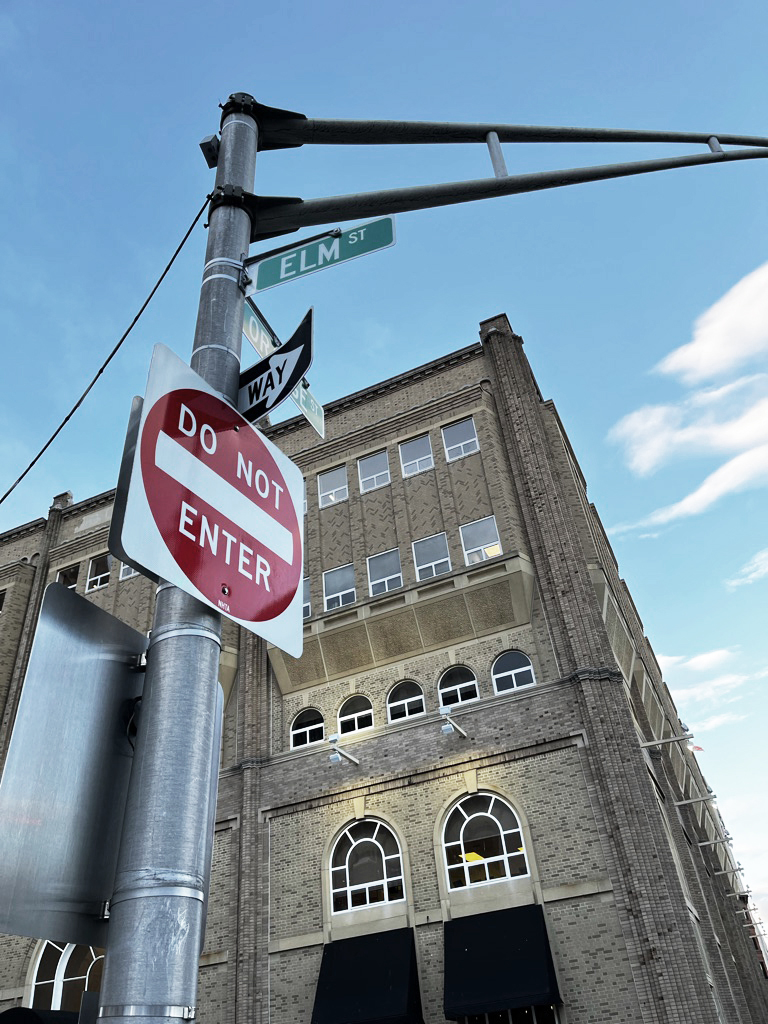Africans were among New Haven first settlers, the archival papers read. Say that she was “the first African of which there is any record,” that her name was Lucretia. 1638 is the year that she arrived, where she lived in Governor Theophilus Eaton’s estate and tended to twenty-one fireplaces and over thirty residents, raising up Elihu Yale himself. In a ninety-one-page paper titled “The Historical Status of the Negro on Connecticut” by William C. Fowler, it is said that Lucretia died happy and content and married to her husband John Cram, and grew old on two acres of land parceled out from Eaton’s property.
If you search online for Lucretia and manage to find her, each result will repeat the words of Fowler’s work when describing her. Whether it be the “Records of the Colony and Plantation of New Haven, from 1638 to 1649” or an 1899 article in Connecticut Magazine titled “Negro Slavery in Connecticut,” Lucretia and her husband are always parceled out no more than a single mention, the subject of a sentence. The sentences all amount to something like this: They were people enslaved to Governor Theophilus Eaton who “grew old and stubborn and eventually died happy and content on their allotted two acres of ground.”
Twice more Lucretia can be found online, once in a 1646 court transcript and another time in “The Public Records of the Colony of Connecticut, from August, 1689 to May, 1706.” The latter collection lends context that Eaton had given Lucretia and John Cram the two acres of land because they were growing “old and troublesome.” In the former, Lucretia isn’t described on a broad scale, but in her actions. Mentioned once in the transcript, she is presented as a witness against Thomas Hogg, an enslaved resident of the Eaton estate accused of bestiality and theft. Each time Lucretia is found, it is only in conjunction with another name.
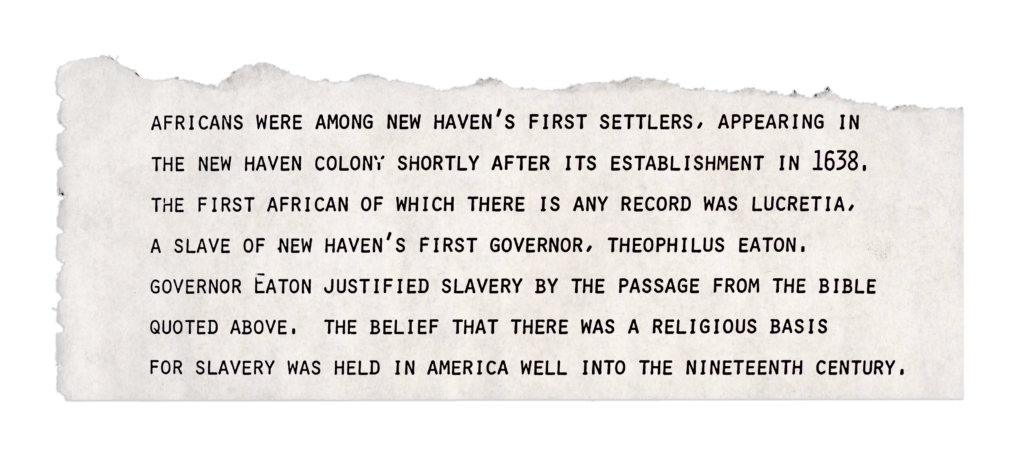
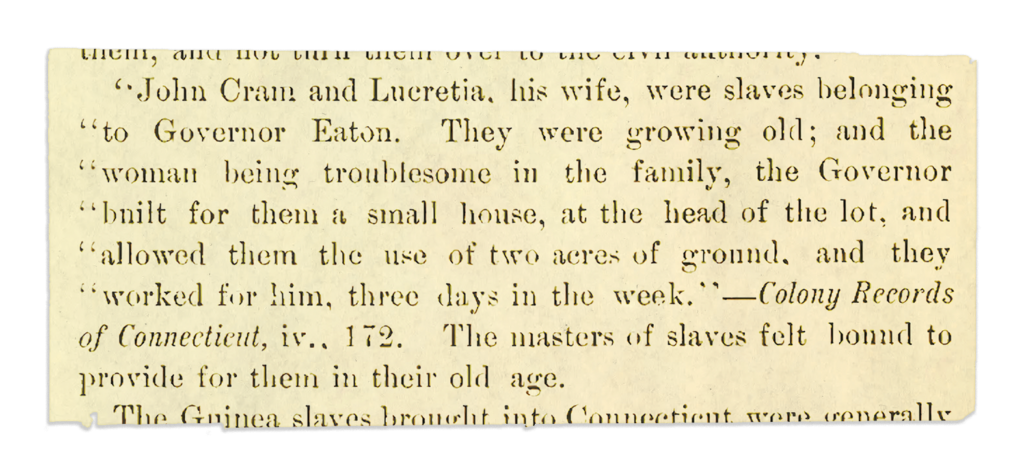
Dr. Ann E. Garrett Robinson, a writer, researcher, and former professor of psychology at Gateway Community College, says that she just “kind of stumbled upon Lucretia.” While conducting research in 1997 for a new museum on schooling for African American children in the Prince Hall Masonic Temple, she came across the historical papers that read that Africans were among New Haven’s first settlers. Lucretia, the papers claimed, was “the first African of which there is any record” in New Haven.
In all of her work, she reaches back into the past, cultivating counternarratives for the lives that were reduced to single lines within historical records. These stories, entangled with her own, beat out a steady drum: “We cannot be forgotten,” Dr. Robinson insists.
“Her name seemed to echo on that page,” Dr. Robinson said, after a long pause. In the twenty-five years since she first read the name Lucretia, Dr. Robinson—now 89 years old—has been searching to complete more of her story.
“Throughout my whole life I’ve looked toward opening doors,” she told me. “Having attended an all-Black school as a child and throughout my high school career, I’ve always had to. Had to be the first, couldn’t wait on nobody.” Had to be, she declared over the phone, as if in a single moment these stories, part of her larger history, could slip between her fingers.
She has devoted much of her life to championing and reconstructing the lives of those who came before her. In 1982, her dissertation research on Booker T. Washington’s three wives was cited in Ebony Magazine. The article attributes her with “playing a major role in focusing public attention on the forgotten wives of Washington.” In all of her work, she reaches back into the past, cultivating counternarratives for the lives that were reduced to single lines within historical records. These stories, entangled with her own, beat out a steady drum: “We cannot be forgotten,” Dr. Robinson insists.
In an attempt to bring Lucretia back into the public memory, Dr. Robinson has spoken out about the importance of public representations of Lucretia’s name. “We need to name a building in her name, we need to name a school in her name…” Dr. Robinson declared back in an April 2022 radio interview on Dateline New Haven.
Steve Winter—Dr. Robinson’s friend and then-alderman for Ward 21—worked with her to try to honor Lucretia. Together, they drafted a petition to have the corner renamed. The petition required at least 250 signatures for approval, two-thirds of which had to come from the neighborhood surrounding the petitioning area. The neighborhood expands into the greater part of Downtown New Haven and includes most Yale students.
Winter and Dr. Robinson found the bulk of their supporters by knocking on doors in the McQueeney Towers on Orange Street, a public housing development for senior and disabled residents. After quickly collecting the required 250 signatures, the pair took the issue to the New Haven Board of Alders. The vote that took place on November 10th, 2022, was swift and unanimous: the corner of Orange and Elm was declared to be Lucretia’s Corner. For Winter and Dr. Robinson, the ease of this process reaffirmed the ability of the public to elevate past lives and stories. Lucretia’s life, Winter noted, “was long overdue” for remembrance.
In the days after the vote, Winter and Dr. Robinson celebrated the naming of Lucretia’s Corner, the same location where Lucretia worked on Governor Eaton’s three thousand-acre, thirty-person estate four hundred years ago. “[Corner naming] is a great tradition because it acknowledges that the public has control over the public space and what stories are told in the public space,” Winter said.
When Dr. Robinson stumbled upon Lucretia’s name nearly twenty-five years ago, she had no idea who Lucretia was and sought to put a face to the name, to answer the lingering question of Who is she? As she continued to search throughout the archives across New Haven and the larger part of Connecticut, Dr. Robinson came to draw up only fragments of Lucretia’s life, compiling only a short stack of documents that failed to reveal who Lucretia was.
There’s very little on Lucretia beyond her name, the touchstone to Lucretia’s life which first prompted Dr. Robinson’s search. She blames part of this absence on the great fire of 1666, the remnants of which caused Eaton to rebuild his estate from wood to brick and stone. Dr. Robinson questions what couldn’t have been replaced—that perhaps lost to the fire were irretrievable hints to who Lucretia was.
“Lucretia’s case is interesting because she is one of the few named enslaved people,” Dr. Robinson told me. “Names weren’t common, especially when you were thought of as property.” Yet even in her name there is uncertainty—we don’t know if Lucretia really was her name, whether it was a title she was born with or one that she was consigned to bear. Perhaps it was just something that Eaton tacked on when she arrived to the Americas. As I raised these doubts to Dr. Robinson, she looked at me and could only nod her head in agreement.
“It’s like a puzzle,” Dr. Robinson says. “You have to piece together what you’ve heard, what the literature tells you.” It seems that in between the gaps of the pieces is silence, and in the silence is where you will find Lucretia.
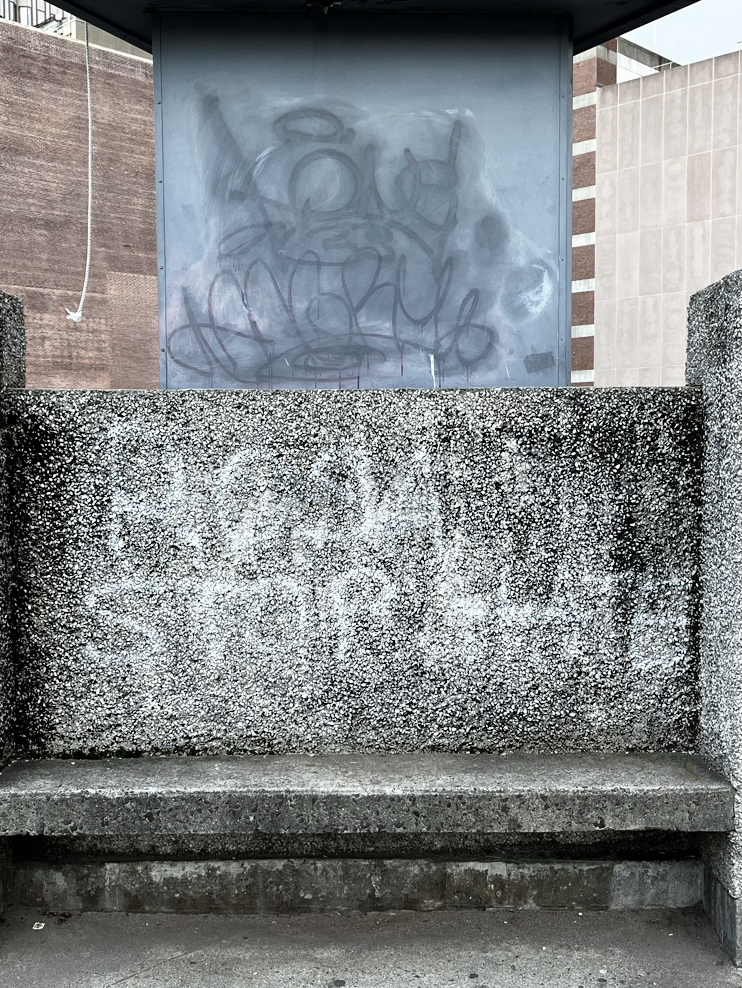
The city has decided it is Lucretia’s Corner now, the corner of Orange and Elm. Perhaps this gesture is meant to signal her final ownership of the two acres that Eaton once allotted her. But then again, you wouldn’t know that this is her corner. There still is no plaque commemorating her place. Instead, you will find the words “ROSA STOP HATE” scratched into a concrete wall. Just above it, a torn poster peeling away from its tape: Slow Down. Breathe, the poster echoes—stop and think, appreciate the life that has been placed before you, remember her life. But we do not know exactly what that life entailed.
Can it ever be Lucretia’s corner? She is not here—not physically at least—to claim ownership over it, and a corner is not enough to undo the violence that she faced and the erasure that subsequently left her absent from history. A name is practically all that is left, and that too is riddled with doubt. During our conversation, Dr. Robinson says, “We don’t know where in Africa Lucretia was born. We don’t know where she’s buried.” A corner doesn’t tell us these things.
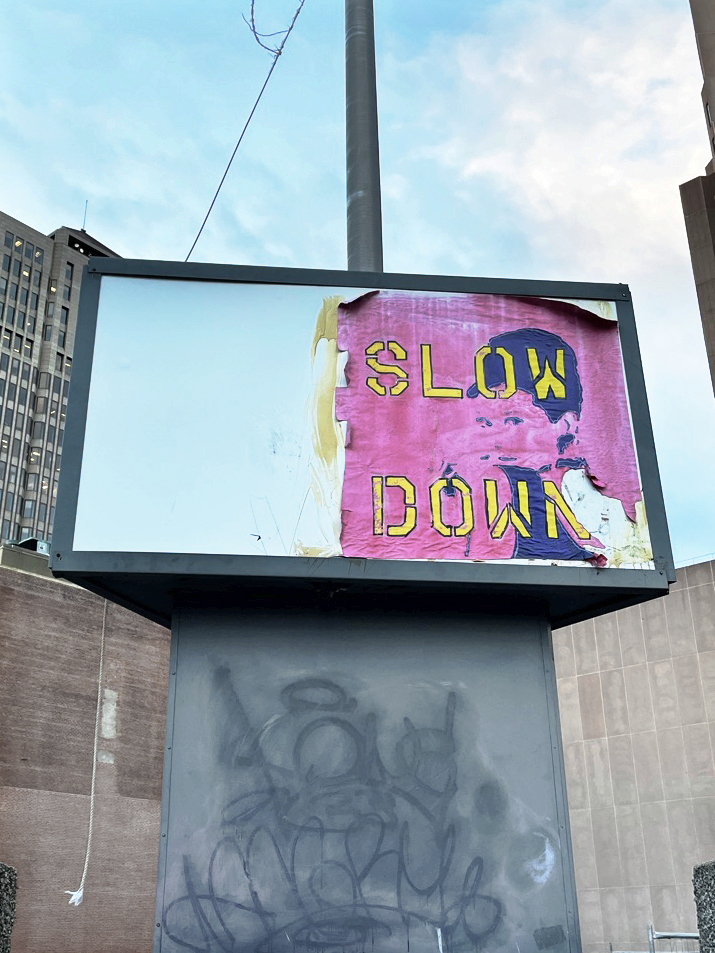
I don’t think the corner is enough, but I don’t think the corner was ever meant to be the solution. It’s an act that brings Lucretia, slowly, into the public memory of current-day New Haven, rather than leaving her to be forgotten, spared just a few words in the archives.
“The corner naming is something that I hope can bring together so many people from various walks of life,” Dr. Robinson tells me at the end of our conversation. “At the corner of Orange and Elm you have the government buildings, the rich and powerful, and even housing projects all in the same ward; that ward is a place that represents the Green, the public library, and, in a small space, all of New Haven.”
We don’t know what her real name is—we can’t ever know. Yet what we do know is this: four hundred years ago she once existed, and four hundred years later she continues to live. To remember her is to reignite that flame, to believe in her life beyond our grasp—that we don’t need to see her nor find her to believe that she lived. So it isn’t much, but it is something, a piece that brings remembrance. This is her corner.
—Johnny Phan is a sophomore in Morse College.


